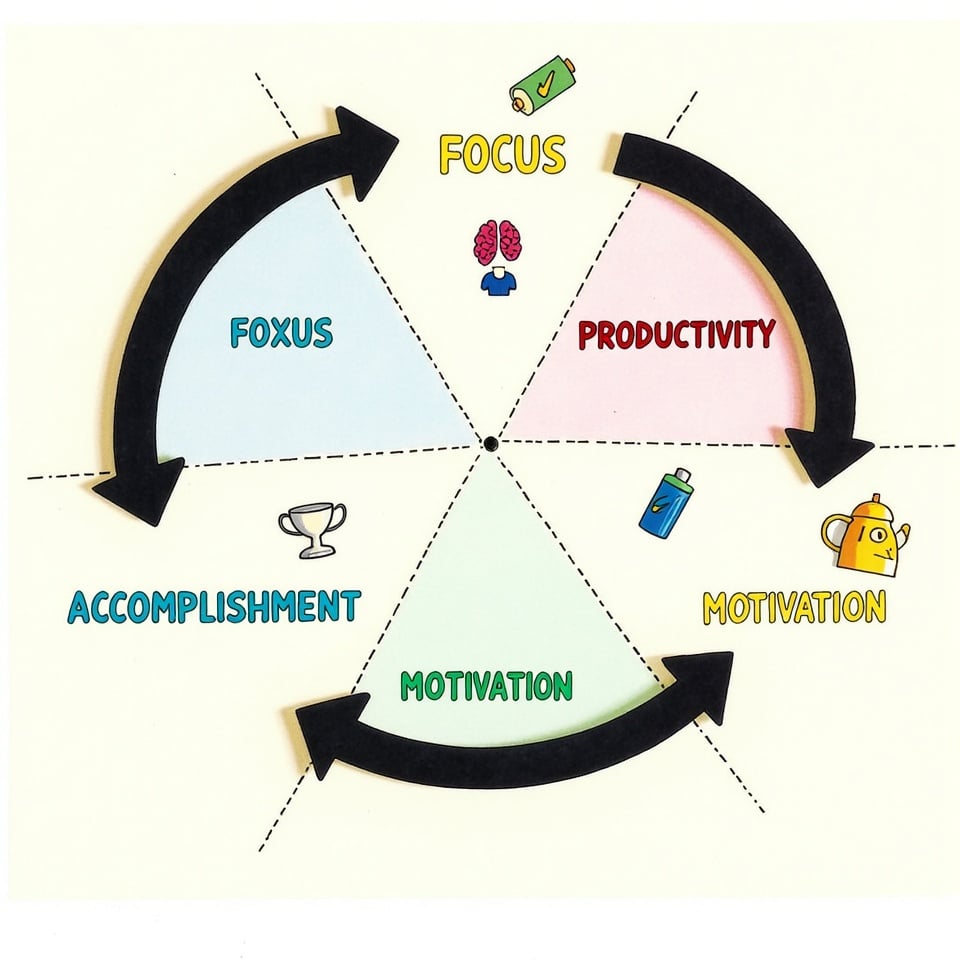Are you struggling to write a clear and convincing analytical essay?
Analytical essays are a crucial part of academic writing, requiring you to break down complex topics, analyze information, and develop a strong argument.
In this article, I’ll take you through 9 easy steps to help you craft a well-structured analytical essay that showcases your critical thinking skills and impresses your readers.
By the end of this guide, you’ll be equipped with the tools and confidence to tackle any analytical essay assignment that comes your way.
Table of Contents
What is an analytical essay?
A fundamental question to start with: what exactly is an analytical essay?
Simply put, an analytical essay is a type of academic writing that breaks down a topic, text, or issue into smaller parts to understand and interpret its meaning. It’s not just about summarizing information, but rather about analyzing and evaluating the information to develop a deeper understanding of the subject.
Think of it like taking apart a clock to see how its individual components work together to make it tick. In an analytical essay, you’re not just describing the clock’s surface — you’re examining its inner workings, analyzing how each part contributes to the whole, and explaining how they relate to each other.
Analytical essays can be written about a wide range of subjects, from literary works and historical events to scientific theories and social issues.
They often require you to:
- Examine the relationships between different ideas, concepts, or events
- Identify patterns, themes, or biases
- Evaluate the strengths and weaknesses of an argument or position
- Develop and support your own argument or interpretation
What are the types of analytical essays?
Analytical essays come in various forms, each with its own unique focus and purpose. While they all share the common goal of breaking down a topic or issue into smaller parts to understand and interpret its meaning, they differ in their approach and emphasis.
Comparative analysis essay
A comparative analysis essay examines the similarities and differences between two or more texts, ideas, or concepts to identify their relationships and understand their significance.
Cause-and-effect analysis essay
A cause-and-effect analysis essay explores the reasons behind an event or situation and examines the potential consequences to understand the relationships between events.
Character analysis essay
A character analysis essay focuses on a character from a literary work, examining their personality, motivations, and actions to understand their role in the story.
Process analysis essay
A process analysis essay explains how a process or procedure works, examining each step to understand how they contribute to the whole.
Rhetorical analysis essay
A rhetorical analysis essay examines the techniques used to persuade or convince an audience, analyzing the language and communication strategies to understand their effectiveness.
Each type of analytical essay requires you to:
- Examine the relationships between different ideas, concepts, or events
- Identify patterns, themes, or biases
- Evaluate the strengths and weaknesses of an argument or position
- Develop and support your own argument or interpretation
How to structure an analytical essay
When it comes to writing an analytical essay, having a clear structure is crucial to presenting your argument in a logical and convincing way.
A well-structured essay helps your reader follow your analysis and understand your points.
Here’s a breakdown of the three main components of an analytical essay:
Introduction
The introduction is where you set the stage for your analysis. It’s your chance to grab the reader’s attention, provide some background information, and clearly state the topic or issue you’ll be analyzing.
A strong introduction should:
- Provide a hook to draw the reader in (e.g., an interesting fact, a quote, or a thought-provoking question)
- Give some context about the topic or issue
- Clearly state the thesis statement – your main argument or claim
Think of your introduction as a roadmap for the rest of the essay. It should give the reader a sense of where you’re going and what to expect.
Body
The body of your essay is where you dive deeper into your analysis. It’s typically divided into paragraphs, each with its own topic sentence, evidence, and analysis.
The body should:
- Break down the topic or issue into smaller parts
- Analyze and interpret the evidence (e.g., quotes, statistics, historical events)
- Explain how the evidence supports your thesis statement
- Use transitional phrases to connect your ideas and paragraphs
A good rule of thumb is to have one main idea per paragraph. This will help you stay focused and ensure that your analysis is clear and easy to follow.
Conclusion
The conclusion is where you wrap up your analysis and reiterate your main points. It’s your chance to leave a lasting impression on the reader and reinforce your thesis statement.
A strong conclusion should:
- Summarize your main points
- Reiterate your thesis statement
- Provide a final thought or call to action
Think of your conclusion as a final summary of your analysis. It should leave the reader with a clear understanding of your argument and a lasting impression of your analysis.
How to write an analytical essay in 9 easy steps
Writing an analytical essay can seem daunting, but breaking it down into smaller steps can make it more manageable.
Here’s a step-by-step guide to help you write a clear and convincing analytical essay:
Step 1: Choose Your Topic
The first step in writing an analytical essay is to choose a topic. This might be assigned to you by your teacher, or you might have the freedom to choose your own. Either way, make sure you understand what the topic is asking you to do.
Ask yourself:
- What is the topic asking me to analyze?
- What kind of information do I need to find?
- What kind of argument can I make about this topic?
Here’s a guide that might help: How to generate essay topics
Step 2: Research Your Topic
Once you have your topic, it’s time to start researching. This involves gathering information and evidence to support your argument. You might read books, articles, or online resources, or conduct experiments or surveys.
As you research, ask yourself:
- What are the main points of view on this topic?
- What are the key arguments for and against?
- What evidence supports or challenges these arguments?
Step 3: Decide on Your Stance
After researching your topic, it’s time to decide on your stance. This means taking a position or making a claim about the topic.
Ask yourself:
- What do I think about this topic?
- What argument can I make about it?
- What evidence supports my argument?
Step 4: Write Your Thesis Statement
Your thesis statement is a clear and concise statement of your argument.
It should:
- Clearly state your main point
- Take a position or make a claim
- Provide a roadmap for the rest of the essay
A good thesis statement might look like this: “In this essay, I will argue that [topic] is [argument] because [reason].”
Here’s a guide that helps you write a great thesis statement.
Step 5: Write Topic Sentences
Topic sentences are the main sentences of each paragraph.
They should:
- Clearly state the main point of the paragraph
- Support the thesis statement
- Provide a link to the next paragraph
Step 6: Create an Outline
An outline is a plan for your essay.
It should:
- Break down the essay into introduction, body, and conclusion
- Show the main points of each paragraph
- Provide a clear structure for the essay
Step 7: Write Your First Draft
Now it’s time to start writing. Don’t worry too much about grammar or spelling at this stage. Just focus on getting your ideas down on paper.
Remember to:
- Follow your outline
- Use clear and concise language
- Support your argument with evidence
Step 8: Revise Your Draft
Once you have a first draft, it’s time to revise. This means looking at the big picture and making sure your essay flows well.
Ask yourself:
- Is my argument clear and convincing?
- Is my structure logical and easy to follow?
- Are my paragraphs well-supported with evidence?
Step 9: Proofread Your Essay
Finally, it’s time to proofread. This means checking for grammar, spelling, and punctuation errors. It’s also a good idea to get someone else to read your essay and provide feedback.
Ask yourself:
- Are there any errors in grammar, spelling, or punctuation?
- Is my language clear and concise?
- Is my essay well-formatted and easy to read?
What is the purpose of an analytical essay?
The purpose of an analytical essay is to break down a topic or issue into smaller parts, analyze and interpret the information, and develop a clear argument or claim. It’s not just about summarizing information, but rather about showing how the different parts work together to create a whole.
In an analytical essay, you’re not just presenting facts, you’re:
- Examining the relationships between ideas
- Identifying patterns and themes
- Making connections between evidence and arguments
- Developing a clear and convincing argument
The goal of an analytical essay is to demonstrate your critical thinking skills, your ability to analyze information, and your understanding of the topic or issue at hand.
Analytical essay outline example
Here’s an example of an analytical essay outline on the topic “The Impact of Social Media on Society”:
I. Introduction
- Hook: “Social media has become an integral part of our daily lives, with billions of people around the world using platforms like Facebook, Twitter, and Instagram to connect with others and share their experiences.”
- Background information: “However, as social media continues to grow and evolve, concerns have been raised about its impact on society, including its effects on mental health, relationships, and democracy.”
- Thesis statement: “In this essay, I will argue that social media has a net negative impact on society, contributing to increased rates of depression and anxiety, the erosion of meaningful relationships, and the spread of misinformation.”
II. Body Paragraph 1: Mental Health
- Topic sentence: “Social media has been linked to increased rates of depression and anxiety in young people.”
- Evidence: “A study by the Royal Society for Public Health found that Instagram is the most detrimental social media platform for mental health, with 45% of young people aged 14-24 reporting feelings of inadequacy and low self-esteem after using the platform.”
- Analysis: “This is likely due to the curated and unrealistic nature of social media, which presents a highlight reel of other people’s lives and can lead to unrealistic comparisons and a distorted view of reality. Furthermore, the constant stream of information on social media can also lead to feelings of overwhelm and anxiety, as individuals feel pressure to stay connected and up-to-date at all times.”
III. Body Paragraph 2: Relationships
- Topic sentence: “Social media has also contributed to the erosion of meaningful relationships in society.”
- Evidence: “A study by the Pew Research Center found that 60% of adults believe that social media has made it easier to stay connected with friends and family, but at the same time, 40% of adults report feeling lonely or isolated, even when they have a large social media network.”
- Analysis: “This is likely due to the superficial nature of social media relationships, which can lack depth and intimacy. While social media can connect us to others, it can also create a false sense of connection, leading us to prioritize online relationships over in-person ones.”
IV. Body Paragraph 3: Misinformation
- Topic sentence: “Finally, social media has also contributed to the spread of misinformation in society.”
- Evidence: “A study by the Knight Foundation found that 70% of adults have seen misinformation on social media, and 50% of adults have shared misinformation without realizing it was false.”
- Analysis: “This is likely due to the lack of regulation on social media platforms, which can allow false information to spread quickly and easily. Furthermore, the algorithms used by social media platforms can also prioritize sensational or provocative content, leading to the spread of misinformation and the erosion of trust in institutions.”
V. Conclusion
- Restate thesis statement: “In conclusion, social media has a net negative impact on society, contributing to increased rates of depression and anxiety, the erosion of meaningful relationships, and the spread of misinformation.”
- Summarize main points: “Through its curated and unrealistic nature, social media can lead to feelings of inadequacy and low self-esteem. Its superficial relationships can lack depth and intimacy, and its lack of regulation can allow false information to spread quickly and easily.”
- Final thought: “As we move forward in this digital age, it is essential that we prioritize responsible social media use and take steps to mitigate its negative effects on society.
Write an outstanding analytical essay with ease using blainy
Are you struggling to write an analytical essay?
Do you need help with generating ideas, organizing your thoughts, and citing sources?
Look no further than the Blainy Free Essay Writer tool!
This innovative tool is designed to help students like you write high-quality analytical essays quickly and efficiently.
With the Blainy free writing tools, you can easily write your argumentative essay.
- Use the Topic Generator to generate ideas for your analytical essay
- Create an essay outline with the help of the Outline Generator
- Organize your ideas and structure your outline with the tool’s suggestions
- Use the Cite Sources feature to automatically generate citations and references for your essay
and many more features!
With the Blainy, you can write a well-structured and well-supported analytical essay in no time!
You’ll be able to focus on the content of your essay, rather than getting bogged down in the details of formatting and organization.
This will allow you to produce a high-quality essay that showcases your knowledge and understanding of the topic.
So why wait?
Try the Blainy Free Essay Writer tool today and take your analytical essay writing to the next level!







